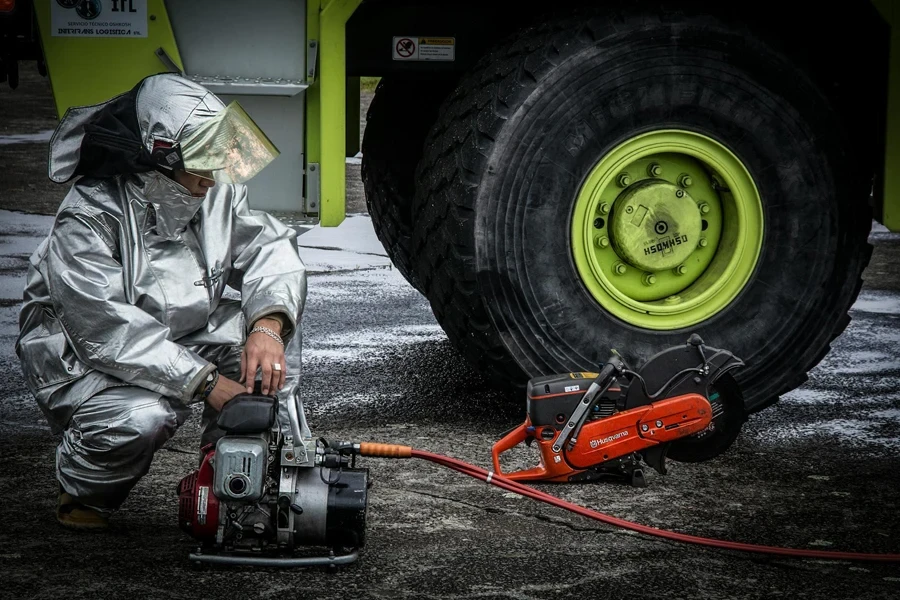Table of Contents
● Introduction
● Market overview
● Different types and their features
● Things to consider when selecting products
● Conclusion
Introduction
Selecting the right tires for trucks is essential for maximizing safety, performance, and cost-efficiency. The truck tire market is evolving, with significant trends affecting choices and market dynamics. Different tire types, such as all-season, all-terrain, mud-terrain, highway, and winter tires, offer specific benefits suited to various applications, making it crucial to understand their unique features. Key considerations include load ratings, tread patterns, durability, fuel efficiency, and budget constraints, all of which play a critical role in determining the most suitable tire for a fleet’s needs. This guide provides a comprehensive analysis to assist business professionals and fleet managers in navigating these factors and making informed decisions that enhance overall fleet performance and safety.

Market overview
The truck tire market is a significant segment of the global tire industry, with substantial growth expected over the next several years. According to market data from Statista, the global truck tire market is projected to reach USD 48 billion by 2028, growing at a compound annual growth rate (CAGR) of 5.8%. This growth is driven by increased demand for commercial vehicles, particularly in emerging economies, and the rising adoption of advanced tire technologies that enhance performance and fuel efficiency. Additionally, the expansion of the logistics and transportation sector globally has been a critical factor contributing to this market growth.
Market shares within the truck tire segment are distributed among various tire types, each catering to specific applications and conditions. All-season tires hold a significant share, approximately 45%, due to their versatility and year-round performance in moderate climates, as reported by Market Research Future. All-terrain and mud-terrain tires are gaining traction, with a combined market share of about 30%, especially in regions with challenging road conditions, such as North America and parts of Asia. Highway tires account for around 20% of the market, favored for their durability and fuel efficiency in long-haul operations. Advances in tire technology, such as the development of smart tires with sensors to monitor tire health and performance, are becoming more prevalent, with the market for these high-tech tires expected to grow by 7% annually according to Techsci Research. Additionally, the shift towards sustainable practices, with manufacturers focusing on producing eco-friendly tires using renewable materials, is influencing market dynamics. These trends, according to industry sources, are expected to drive the market, offering new growth opportunities and challenges for tire manufacturers and fleet operators alike.
Different types and their features
All-season tires
All-season tires are renowned for their versatility and balanced performance in various weather conditions. These tires are designed to provide good traction and handling in dry, wet, and light snowy conditions, making them suitable for year-round use in moderate climates. According to GCR Tires, all-season tires are a popular choice due to their ability to deliver consistent performance across a range of environments, which helps in reducing the need for seasonal tire changes. These tires typically feature a moderate tread depth that offers a compromise between traction and fuel efficiency. The design of all-season tires includes a mix of siping and grooves to handle different weather conditions, ensuring reliable performance for everyday driving needs. This balance makes them a cost-effective option for fleet managers who need tires that perform adequately in diverse driving conditions.

All-terrain tires
All-terrain tires are engineered to deliver excellent traction on diverse terrains, including both on-road and off-road conditions. These tires are durable and designed to withstand the challenges of mixed driving conditions, providing a balance between rugged off-road capabilities and smooth on-road performance. As noted by Road Rescue Inc., all-terrain tires are ideal for trucks that frequently transition between urban environments and rough terrains. The tread patterns of these tires are more aggressive than those of all-season tires, featuring deeper grooves and larger tread blocks to enhance grip and stability on uneven surfaces. Additionally, the sidewalls of all-terrain tires are often reinforced to resist punctures and damage from rocks and debris, making them a reliable choice for varied driving scenarios. Their construction ensures longevity and durability, which are critical for vehicles that operate in demanding conditions.
Mud-terrain tires
Mud-terrain tires are specifically designed for off-road performance, featuring aggressive tread patterns that provide superior traction in muddy and rugged conditions. These tires are equipped with larger, more pronounced tread blocks and wider voids that help to clear mud and debris effectively, ensuring consistent traction. According to Three-A Tires, mud-terrain tires are essential for trucks that operate predominantly in off-road environments where standard tires might fail. These tires are built to handle extreme conditions, including deep mud, loose gravel, and rocky terrains. While mud-terrain tires excel in off-road settings, they tend to produce more road noise and offer a rougher ride on paved surfaces compared to other tire types. Their construction includes stronger sidewalls to prevent cuts and punctures, making them durable enough to withstand harsh off-road conditions. Despite their specialized nature, the versatility of mud-terrain tires makes them an indispensable tool for heavy-duty trucks operating in challenging environments.
Highway tires
Highway tires are optimized for long-distance driving, offering a smooth ride and high fuel efficiency. These tires are designed with continuous rib patterns that minimize rolling resistance, which helps to improve fuel economy and reduce overall operating costs. GCR Tires highlights that highway tires are an excellent choice for linehaul operations, where trucks cover extensive distances on highways. The low rolling resistance design of these tires not only enhances fuel efficiency but also contributes to a quieter, more comfortable ride. Highway tires are constructed to provide good traction in both dry and wet conditions, though they are not intended for off-road use or severe weather conditions. The tread patterns are generally less aggressive, focusing on stability and durability at high speeds. This makes highway tires ideal for trucks engaged in long-haul transportation, where consistent performance and fuel savings are paramount.
Winter tires
Winter tires are designed to deliver enhanced grip in cold conditions, particularly on snow and ice. These tires feature specialized rubber compounds that remain flexible at low temperatures, and their tread patterns include numerous sipes and grooves to improve traction on slippery surfaces. Road Rescue Inc. notes that winter tires are crucial for trucks operating in regions with harsh winter climates, as they provide the necessary safety and performance that standard tires cannot match. Winter tires typically have a deeper tread depth and a unique tread design that channels snow and slush away from the tire, improving contact with the road. They are marked with the three-peak mountain snowflake symbol, indicating their suitability for severe snow conditions. The enhanced traction provided by winter tires reduces the risk of accidents in wintery conditions, ensuring that trucks can operate safely and efficiently throughout the cold season. These features make winter tires indispensable for maintaining fleet performance and safety in adverse weather conditions.

Things to consider when selecting truck tires
Load ratings and tire size
Matching load ratings and tire sizes to truck specifications is crucial for ensuring safety and performance. Load ratings indicate the maximum weight a tire can safely support, and using tires with incorrect ratings can lead to premature wear or even dangerous blowouts. According to Three-A Tires, selecting the right tire model based on the truck’s load capacity and intended applications is essential. For instance, a common tire size like 12R22.5 needs to be chosen carefully, considering its load index, speed rating, and pressure requirements to ensure it meets the operational demands of the truck.
Tread patterns and traction
Different tread designs significantly impact traction and overall performance. Rib patterns, for instance, are ideal for steer positions due to their stability and low rolling resistance, which enhances fuel efficiency. Lug patterns, on the other hand, are better suited for drive positions, providing excellent traction in off-road conditions by featuring larger, more aggressive tread blocks. According to GCR Tires, choosing the correct tread pattern based on the vehicle’s primary operating environment is essential for optimizing performance and safety. Tread designs like unidirectional and siped patterns offer specific advantages, such as improved wet traction and reduced stone retention.
Durability and longevity
The construction quality and expected wear of tires directly affect their durability and lifespan. High-quality materials and advanced manufacturing techniques contribute to longer-lasting tires that can withstand the rigors of heavy-duty use. Three-A Tires highlights the importance of radial tires for their superior heat dissipation and extended tire life, making them suitable for high-speed and long-haul applications. Bias-ply tires, although less common, are preferred for their durability and load-carrying capacity in off-road conditions. Regular maintenance, including proper inflation and alignment, also plays a critical role in extending tire life.
Fuel efficiency and rolling resistance
Rolling resistance is a key factor impacting fuel costs and overall efficiency. Tires with lower rolling resistance require less energy to move, thereby improving fuel economy. According to Road Rescue Inc., highway tires are designed with continuous rib patterns that minimize rolling resistance, making them ideal for long-distance travel. The fuel savings from using low rolling resistance tires can be substantial, reducing operational costs for fleets. Innovations in tire technology, such as specialized rubber compounds and optimized tread designs, continue to enhance fuel efficiency, contributing to more sustainable and cost-effective operations.

Budget considerations
Balancing cost with quality involves evaluating the total cost of ownership and exploring warranty options. While high-quality tires may have a higher upfront cost, they often provide better performance, durability, and fuel efficiency, leading to long-term savings. Three-A Tires suggests considering reputable brands that offer a balance between cost and reliability. Additionally, warranties and post-purchase support are crucial factors to consider. Tires that come with comprehensive warranties and strong manufacturer support can provide peace of mind and protect against unexpected expenses. Analyzing customer reviews and ratings can also help in making an informed purchasing decision.

Conclusion
Selecting the right tires for trucks involves careful consideration of various factors, including tire types, market trends, load ratings, and budget constraints. Understanding the specific needs of the fleet and matching tires to those requirements enhances overall performance, safety, and efficiency. For instance, choosing between all-season, all-terrain, mud-terrain, highway, and winter tires depends on the primary operating conditions and the specific demands of the fleet. Key considerations such as traction, durability, and fuel efficiency must be evaluated to ensure the chosen tires meet the operational demands of the fleet. Additionally, keeping abreast of market trends and technological advancements, such as the development of smart tires and eco-friendly materials, can provide competitive advantages and further optimize fleet operations.
Making informed choices based on thorough analysis and reliable data allows fleet managers to optimize tire performance and reduce operational costs. By assessing load ratings, tread patterns, and rolling resistance, managers can select tires that not only enhance safety but also improve fuel efficiency and longevity. Comprehensive evaluation of tire specifications and market trends helps in selecting products that provide long-term value and safety.




